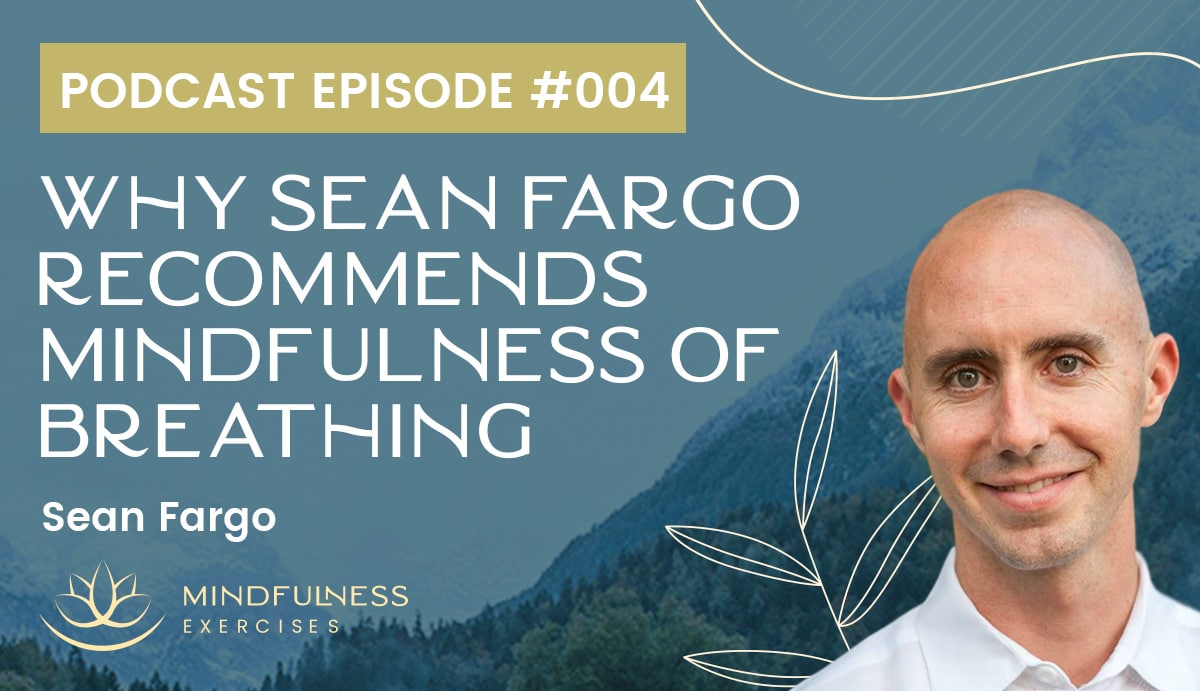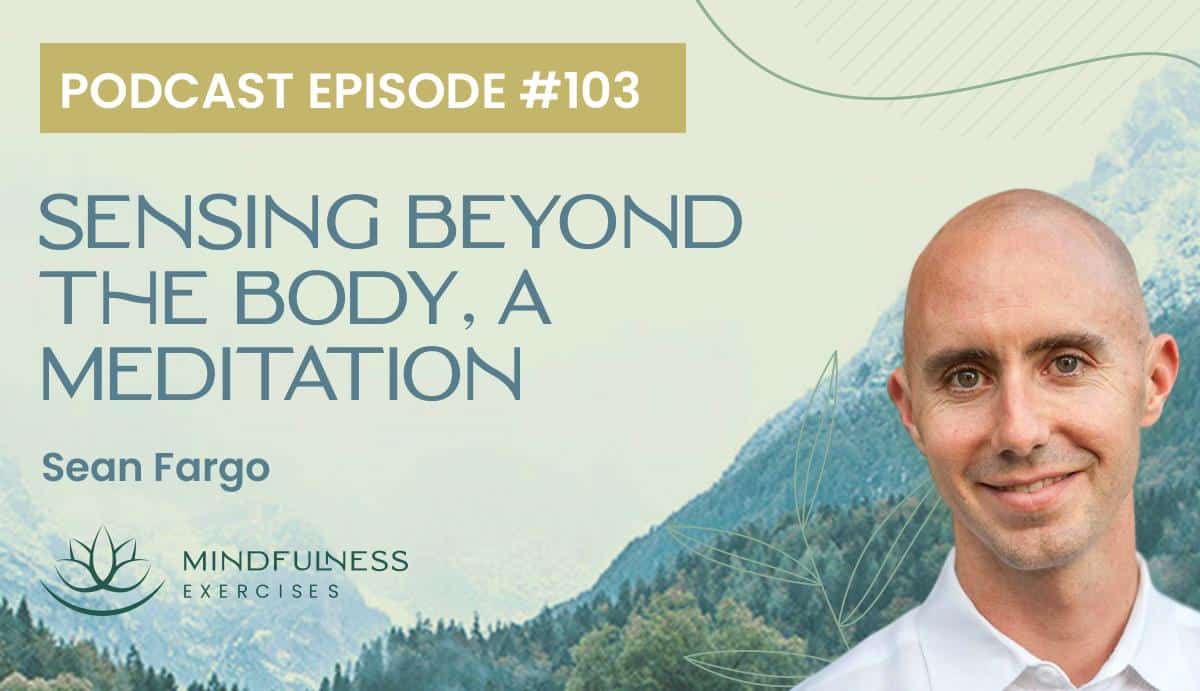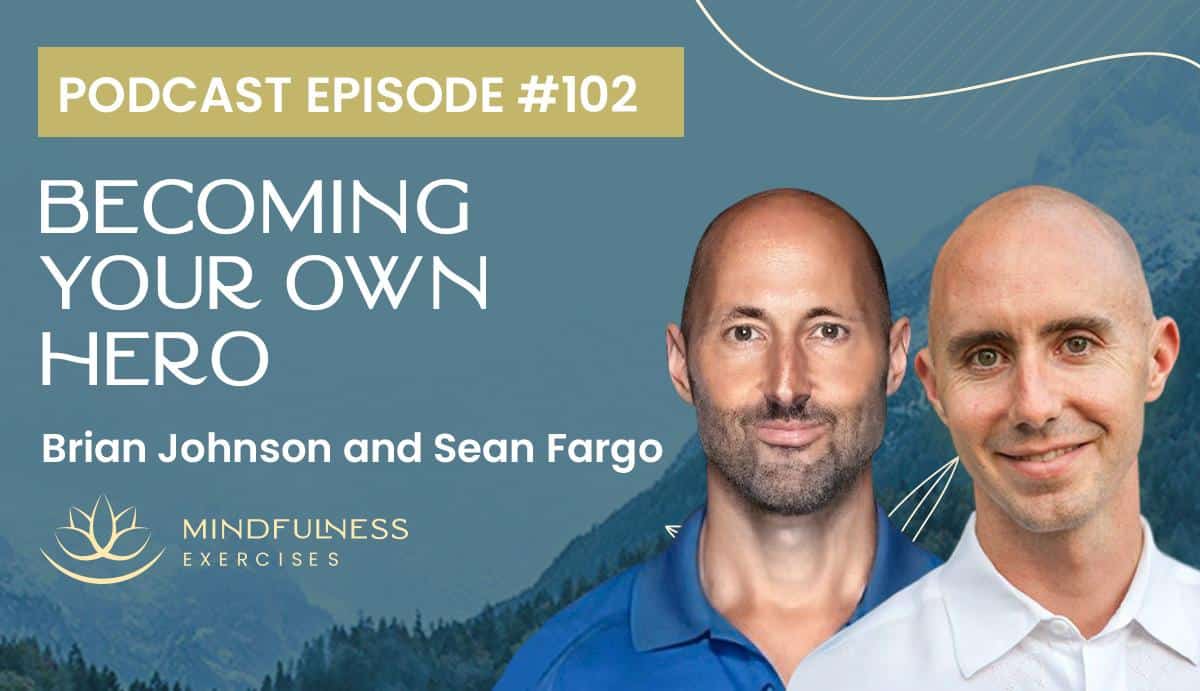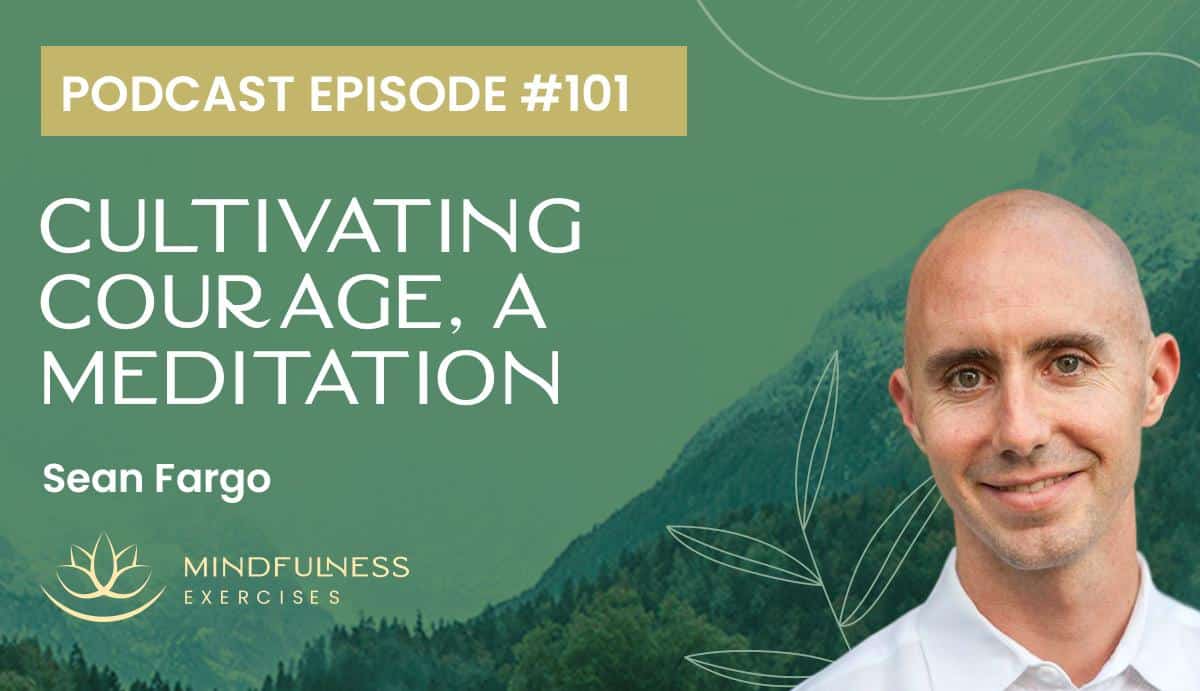Listen now

Mindfulness of breathing is a foundational practice, but it’s not merely for beginners. Learn why former Buddhist monk Sean Fargo recommends it as the first meditation we teach, but also, why some mindfulness practitioners spend their entire lives with this one method.
In this episode, Sean offers mindfulness teachers insight on how to best support others in their breath awareness meditations, methods for addressing common hindrances, and speaks to the profundity of concepts such as impermanence and samadhi, which are available in this simple practice.
This episode is brought to you by the Mindfulness Meditation Teacher Training Program. Learn more about this unique, online, self-paced certification program at teach.mindfulnessexercises.com
Show Notes:
Why mindful breathing is a great initial practice to teach
Mindfulness of breathing is an accessible beginner practice. It requires very little explanation beforehand, and doesn’t even need to be introduced as a meditation. We’re merely asking the question, what type of sensations are here as I breathe? Yet just because it’s simple, doesn’t mean its benefits are limited.
“I know plenty of mindfulness practitioners who only do mindfulness of breathing. And, you know it can seem simple, and there’s a lot of nuance that unfolds the more we pay attention.”
Which anchors are most appropriate
We might choose different anchors to stabilize the mind depending on our experience with meditation or the quality of our mind on a specific day. We can start with a general sense of the body as a whole, or focus in on the belly. Narrowing our focus to an even smaller area, such as the nostrils, helps foster tighter concentration.
“Plenty of people will try to sense into air [...] anywhere between the nostrils and the belly. So, you know, through the nose, lungs, down to the diaphragm. It’s something to be curious about.”
Addressing self-criticism or self-judgment
Putting one hand on the belly can be helpful for fostering a sense of connection to the breath, but may also trigger self-criticism. Sean offers examples on what a guide might emphasize to steer others away from self-judgment. This includes opening to visceral sensation as well as caring curiosity, gratitude and other heartful qualities.
“Sometimes when we sense into different parts of the body we might invite a sense of appreciation in, or gratitude for that area of the body.”
Why emphasize bodily sensation
Instructions to be mindful of ‘the breath’ can sometimes feel vague or amorphous, making it easy for the mind to wander. On the other hand, the invitation to notice bodily sensation is easy for most people to understand, and offers a more precise anchor to the present moment. Instructions such as these are supportive for beginners, and can also lead to the highest states of concentration.
“I do think that a lot of people will think that they’re bringing mindfulness to ‘the breath,’ but really it’s more of a concept of breathing, which takes us out of the actual experience of noticing, or being aware of, breathing.”
“Lots of people have gone into samadhi or very deep states of concentration by sensing into parts of the body.”
When it’s hard to breathe naturally
As teachers, we often instruct others to pay attention to the normal, regular movement of our breath. But it’s sometimes difficult to relax into this natural rhythm. Sean offers advice on what we can do as practitioners, and as teachers, to breathe with greater ease or encourage it in others. Suggestions include everything from a hand on the belly, to an offering of self-compassion, or a cup of warm tea.
“But emphasizing, this is not about judgment, this is not about breathing a certain way, this is not about having a flat belly or a 6-pack or anything like that, we’re just sensing into how we’re breathing, being aware of that. Each breath is new.”
Using breath to realize impermanence
Mindfulness of breathing is commonly used as a beginner’s practice, but that doesn’t at all mean it’s only for beginners. Breath meditation is a gentle way to introduce more advanced concepts such as the impermanence of all phenomena, including ourselves. We might use breath as a death awareness practice, or use it to train in ‘beginner’s mind.’ Either way, we learn to stop sweating the small stuff.
“You can apply beginner’s mind to just about anything. The sense of wonder, novelty of this very moment. The more we really pay attention and open to our senses, the more wondrous it tends to become. If we’re really truly fully here, life tends to become more beautiful.”
Resources

About Sean Fargo
Sean Fargo is the founder of Mindfulness Exercises, one of the most well-known resources on the web for all things mindfulness. Over 3 million people have enhanced their mindfulness and meditation practices with the free and premium services provided on the platform.
Sean has taught mindfulness and meditation in Fortune 500 companies, health and government organizations, prisons and hospitals around the world. His mindfulness teacher training certification program has inspired over 500 mindfulness teachers to share the power of this practice with others.







